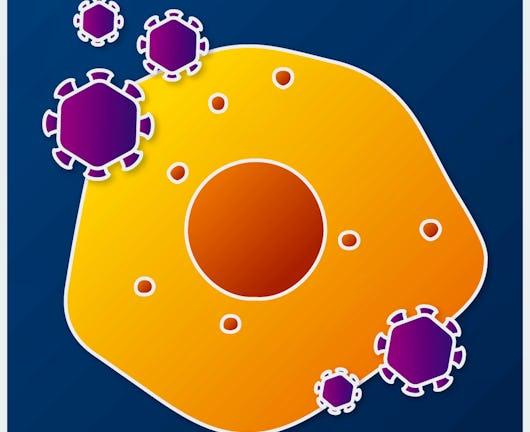MOOC List is learner-supported. When you buy through links on our site, we may earn an affiliate commission.

MOOC List is learner-supported. When you buy through links on our site, we may earn an affiliate commission.
On successful completion of the course, learners will be able to:
1. Identify key interfaces of virus: host interaction
2. Verify how transmission drives virus pathogenesis and shapes virus evolution
3. Demonstrate an understanding of how virus control with anti-virals differs from protection with vaccines.
This is an intermediate series of courses intended for both clinical and non-clinical scientists who want to update their skills for work in clinical, academic, and pharmaceutical/bioscience industries, and is developed and delivered by experts working on viruses and novel vaccines.
To be successful in this series of courses, you should have basic knowledge in biology, genetics, microbiology or related fields.
This course is part of the Foundations in Virology and Vaccinology Specialization.
What you'll learn
- Recognise how viruses cause infections
- Recognise how vaccines prevent infections
Syllabus
Pathogenesis – why and how do viruses cause disease
Viruses can cause mild, chronic and severe illness and even death. The clinical effects of viruses might occur days or weeks and even months or years after the initial infection, even causing lifelong negative influences on life and livelihood. The impact is experienced by individuals, families, communities, workplaces, healthcare systems, and society. When we have outbreaks, epidemics and even pandemics of virus disease the effects can be devastating. In this module, we will look at viruses and focus on how they cause disease, and what factors affect pathogenesis and virulence.
Virus ‘lifestyles’ – why do some viruses cause short duration diseases and others cause cancer?
What are viruses doing inside host cells? How are they making copies of themselves? How are those copies getting out to infect other cells within us? And how are they getting out of us to infect others? In this module, we will look at the replication strategies of different groups of viruses in humans, known as their ‘lifestyles’.
Tissue tropism and host range – why do viruses infect different animals and cause different diseases
Viruses are truly parasitic microorganisms. We have seen repeatedly how receptors, on host cells, and attachment proteins, on viruses, affect which cells a virus can enter. Once inside the cell, viruses still need the cell to supply the energy and all the raw materials they need to replicate themselves, as well as the environment and much of the machinery. In this module, we will explore the concepts of virus tissue and host range, and explore key questions around how viruses interact with host cells.
How and why do outbreaks and pandemics occur, and why do they often emerge from animals?
When outbreaks and pandemics start to happen, what do we hear about? It might be the symptoms. It will likely be the number of reported cases or fatalities. It might be what we are advised to do to avoid infection. And we also have a curiosity, or even a need, to find out where this virus came from. And in some cases, a major source of virus outbreaks has been other animals. In this module, we will look at virus threats from animals, known as ‘zoonotic infections’.
How can we prevent and/or control virus infections and outbreaks?
Antibiotics have kept us safe from bacterial infections all over the world. In situations and places that would previously have had significant mortality. However, they have their origins in, and deal with very different pathogens to antivirals. Simply because viruses have taken a completely different path and developed an incredibly effective strategy for causing viral infection in their host, making them much more difficult to treat. In this final module, we will look at the whole topic of how we prevent and control virus infections and outbreaks.
MOOC List is learner-supported. When you buy through links on our site, we may earn an affiliate commission.
MOOC List is learner-supported. When you buy through links on our site, we may earn an affiliate commission.
